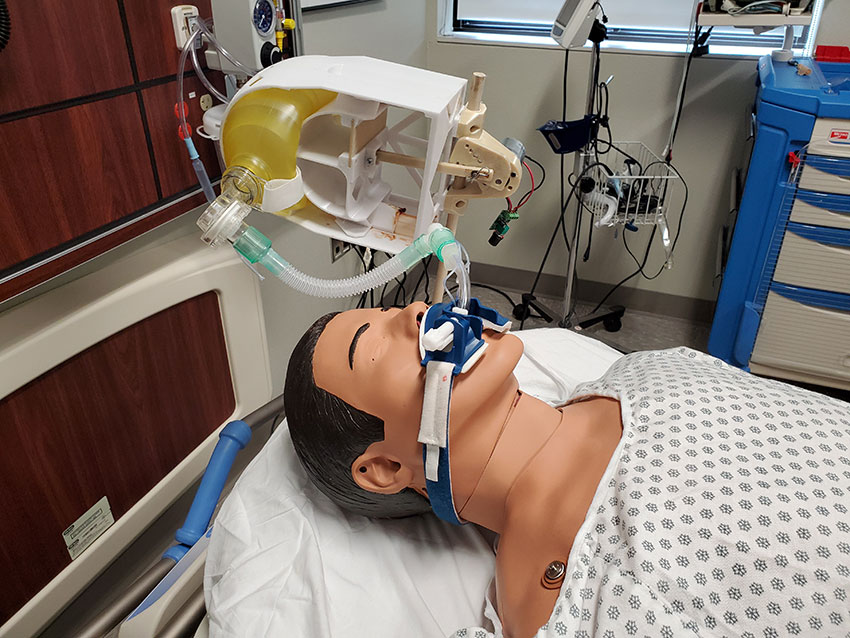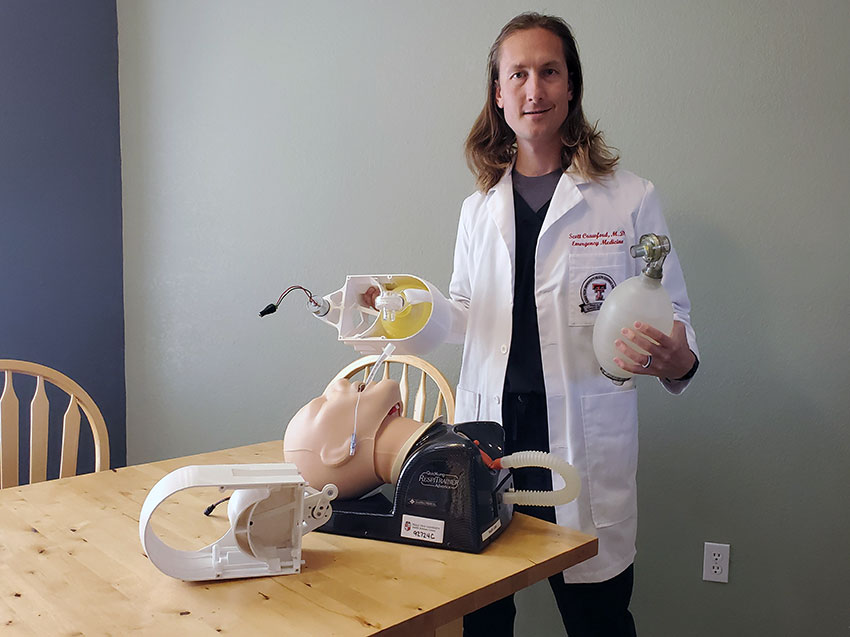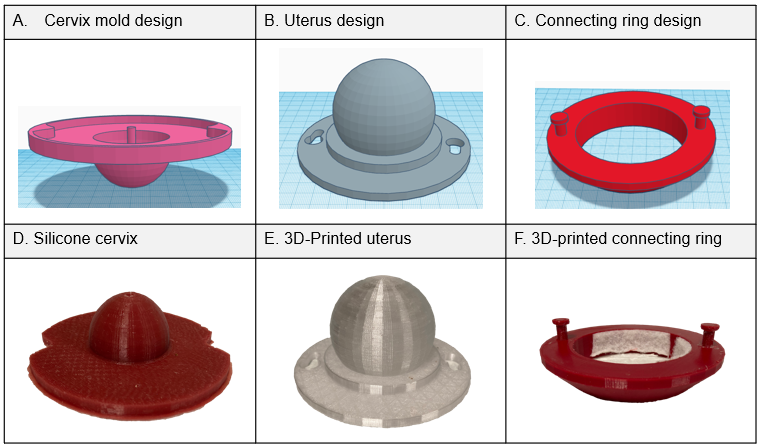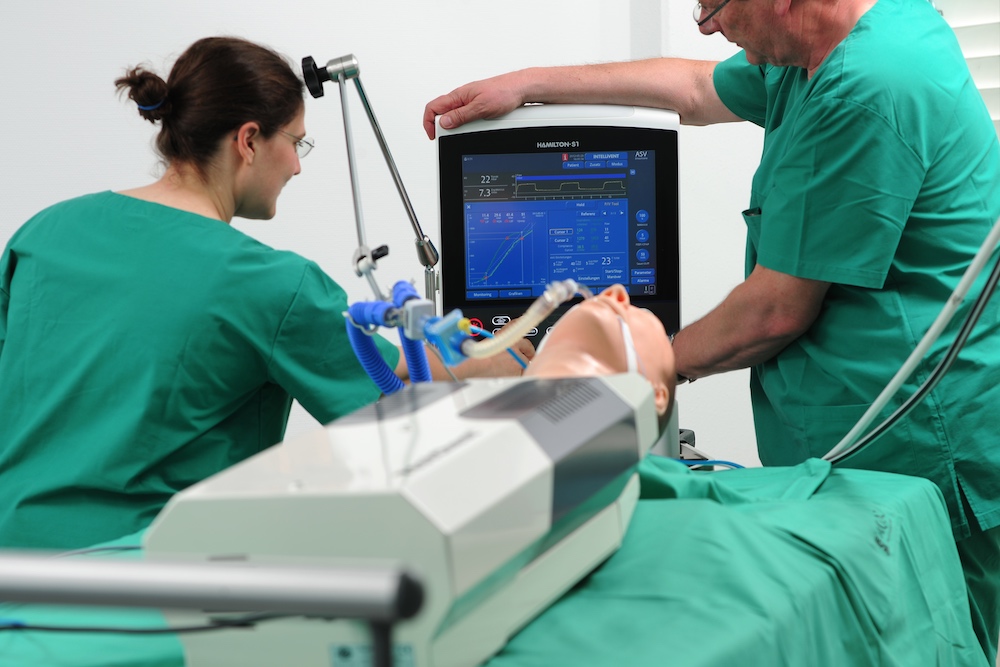Dubbed the “Texas Breather”, SimGHOSTS Past President Dr. Scott Crawford and the medical simulation programs at Texas Tech University Health Sciences Center El Paso and the W.M. Keck Center for 3D Innovation at The University of Texas at El Paso have created a 3D printable Ventilator which only costs $1,000! Currently under review for emergency use authorization by the FDA for use in Texas, the innovative design shows the power of clinical simulation champions at work during COVID-19 to maximize outcomes with the limitations of what we have.
Dr. Scott Crawford, the Director of the TTUHSC at El Paso Training and Educational Center for Healthcare Simulation (TECHS) and Assistant Professor of Medicine at the Emergency Department at Univeristy Medical Center in El Paso, Texas, shared with HealthySimulation.com that “projects like this really speak to the power of interdisciplinary teams. By bringing together engineers, researchers, and clinicians we were able to innovate this devices in a matter of weeks. Healthcare simulation tools were instrumental in the testing and design of the Texas Breather, especially during the pandemic. The ability to use sophisticated pulmonary physiology models allowed demonstration of its clinical function without requiring patient or animal testing.”
David Peregino of the TTUHSC El Paso EptechView writes “Nationwide, hospitals are concerned about a possible shortage of ventilators as more Americans require treatment for COVID-19, the novel coronavirus disease that can cause life-threatening respiratory problems such as pneumonia. A collaboration between Texas Tech University Health Sciences Center El Paso and the University of Texas at El Paso could help solve the problem.
Using 3D printing, the team of physicians and engineers have developed an innovative, low-cost ventilator for the health care sector. “This low-cost ventilator would be used if existing mechanical ventilators were not available in any setting requiring assisted breathing,” Dr. Crawford said. “While there’s a particular need in third-world and developing nations, if an industrialized nation became overwhelmed, it could help in those regions as well.”
Pergino shares further that “Close collaboration between the TTUHSC El Paso board-certified emergency physicians and their teams, and the faculty, engineers and students in the Keck Center at UTEP was key to rapidly refining the design of the Texas Breather. The device mounts to an IV pole at the patient’s bedside and provides an adjustable airflow volume and respiratory rate. All mechanical components are fabricated with production-grade material and have successfully passed simulated-use and worst-case scenario testing. The team used advanced respiratory simulation tools in the TECHS center to test and calibrate the device. These tools, used by TTUHSC El Paso students to study respiratory physiology, played an important part in validating the safety and functionality of the Texas Breather.”
Alex Dalton of the El Paso Times writes “While a conventional hospital ventilator can cost tens of thousands of dollars, Dr. Crawford believes that the Texas Breather can be produced for less than $1,000 per unit, with each taking around eight hours to produce. The design is centered on a widely available bag-valve-mask device, normally operated manually by first responders and healthcare providers to aid patients who are having trouble breathing.
Dalton further explains how “the Texas Breather incorporates mechanical parts and an electric motor that allows the bag to be operated automatically, with adjustable speed and compression. Work on the project began in early March, with Stump and Crawford developing sketches of what would become the breather. The designers have sought an emergency use authorization from the Food and Drug Administration to allow the use of the Texas Breather in hospitals during the COVID-19 Pandemic. Staff from the San-Francisco-based Bessel LLC have helped the team navigate the FDA approval process.”
ABC7’s Madeline Ottilie reported that “the Texas Breather design was created by Dr. Crawford, alongside retired TTUHSC El Paso faculty member Robert Stump, M.D., Ph.D. and Luis Ochoa, a manager at the W.M. Keck Center for 3D Innovation in UTEP’s College of Engineering. UTEP Keck Center Director Ryan Wicker, Ph.D., also helped put the full resources of the center behind the project.”
Madeline continues, “It is very simple in its design,” Dr. Crawford said. “There is no software. There are only two pieces of electronic hardware. The entire casing of the product itself is actually 3D printed, so the plastic is relatively inexpensive and even putting in manufacturing costs, we’re able to produce these units for way less than a commercial ventilator might be.
She further suggests that “another component of the machine that allows for saving on costs is the incorporation of a bag-valve mask device. The group is currently pursuing emergency use authorization from the FDA and working on plans to produce the machines on a larger scale. Dr. Crawford says it takes about eight hours to produce each one.”
Recently on the SimGHOSTS.org blog, Dr. Crawford shared a helpful intro guide to medical ventilators for those without the clinical experience in his article “Breathe Easier with Ventilation Knowledge During COVID-19“, and is also the co-editor of Comprehensive Healthcare Simulation: Operations, Technology, and Innovative Practice.









